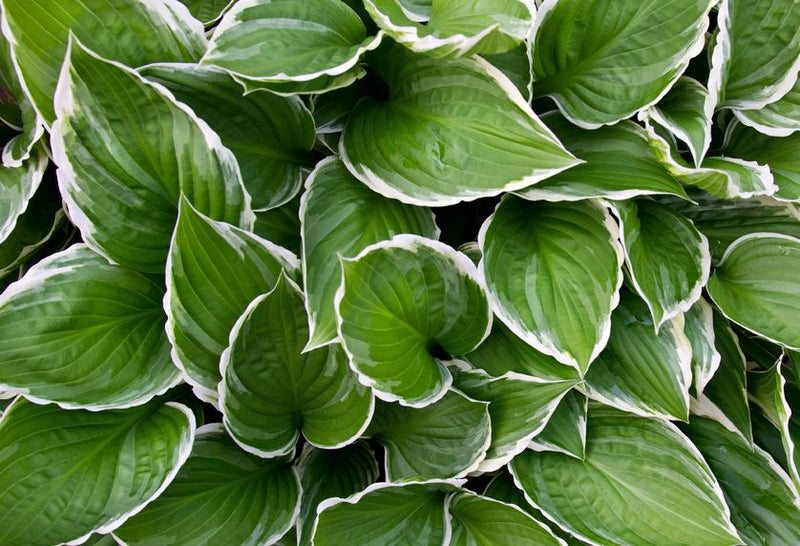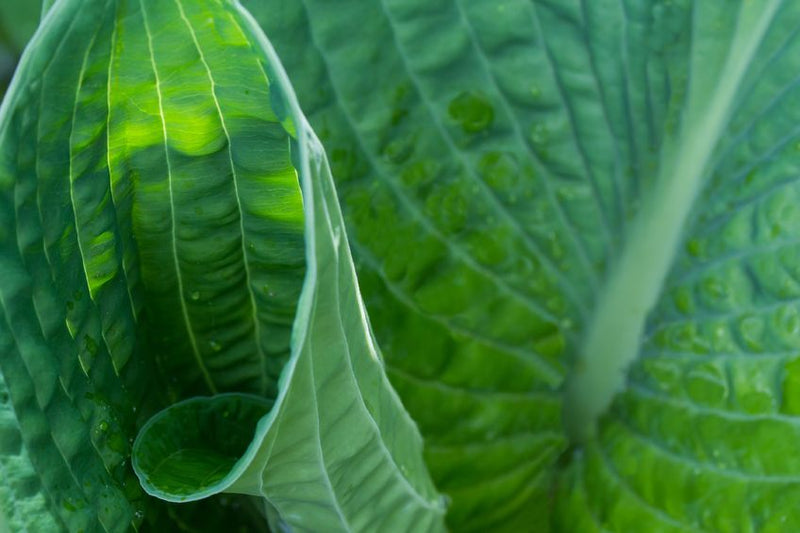Hosta
Hostas belong to the lily family and are considered the ultimate shade plant. They are available in a variety of colors and sizes and, thanks to their versatility, are truly versatile. They can be used in small urban gardens as well as in large parks, in containers, or in courtyards.



Growth form
This clump-forming plant reaches a height of between 60 and 100 cm. It is generally somewhat wider than it is tall. Its long, ovate to round, pointed, heart-shaped leaves come in a variety of foliage colors. There are green-leaved, blue-leaved, or yellow-leaved forms, leaves with yellow edges or yellow centers, and leaves with white edges or white centers.
blossom
Depending on the species and variety of hosta, their flowers appear tirelessly from June to September. The large, fragrant blossoms are approximately 5–10 cm long, narrow, and shaped like funnels or trumpets. The color spectrum ranges from pure white to cream to all shades of violet.
Location requirements
Hostas prefer a shady to partially shady location. However, if the soil is consistently moist and fresh, they also tolerate full sun. The leaf color indicates the required light intensity. The general rule of thumb is: the lighter the leaf, the less sun it needs and can tolerate. Hostas are very similar to us humans in this respect. The plants need firm, fresh, moist, but well-drained soil.
Care
Hostas are generally quite easy to care for. You just need to make sure the soil is always sufficiently moist. Since hostas are considered susceptible to snails, you can cover the soil with gravel to protect them. However, through breeding and hybridization, there are also hostas that are said to be snail-resistant.
Other species and recommended varieties
Hostas resistant to snails:
'Invincible', 'Halcyon', 'June', 'El Nino', 'Remember Me', 'Sum and Substance'
'Halcyon': This 45–55 cm tall hosta variety has medium-sized, gray-blue frosted leaves. It blooms in light purple in July and August.
'June': This plant is one of the smaller varieties, reaching 25–40 cm in height. The pale purple flowers bloom in July and August. It has green-edged, creamy-yellow leaves that turn golden yellow or blue in spring.
'Remember Me': It grows to 30–40 cm tall. The purple flowers appear in July and August. The leaves are oval to lanceolate, creamy white, with a narrow, blue-green margin.
'Sum and Substance': This 65–70 cm tall hosta variety has heart-shaped, medium-sized, slightly cupped, vibrant yellow-green leaves. It blooms a beautiful purple in August and September.
Gray leaf hosta (Hosta fortunei)
This species reaches a height of 60–90 cm and spreads up to 120 cm. It blooms in July and August. The gray-leaf hosta is particularly popular for its beautiful leaf markings.
Recommended varieties: Hosta 'fortunei var. Albopicta', Hosta 'fortunei var. Aureomarginata'
Lily Hosta (Hosta plantaginea)
The flowering period extends from July to September. Its flowers, which open in the evening, exude an intense fragrance. The lily hosta grows up to 60 cm tall and approximately 100 cm wide. This species is particularly suitable for patios, balconies, or containers. Its intense fragrance and large, beautiful flowers are what make this particular species special. Recommended varieties: Hosta 'plantaginea var. Grandiflora', Hosta 'plantaginea var. Japonica'
Blue leaf hosta (Hosta siboldiana)
This perennial reaches a height of 100 cm and spreads up to 120 cm. In June and July, it produces bell-shaped flowers. The wrinkled, deeply folded, and frosted leaves are blue-green. Recommended variety: Hosta 'sieboldiana var. Elegans'
Snow Feather Hosta (Hosta undulata)
This species grows to 100 cm tall and about half as wide. It has twisted and rolled, pointed, long leaves with a white or cream-colored center. It blooms in July and August. Recommended varieties: Hosta 'undulata var. Univittata', Hosta 'undulata var. albomarginata'







































































































